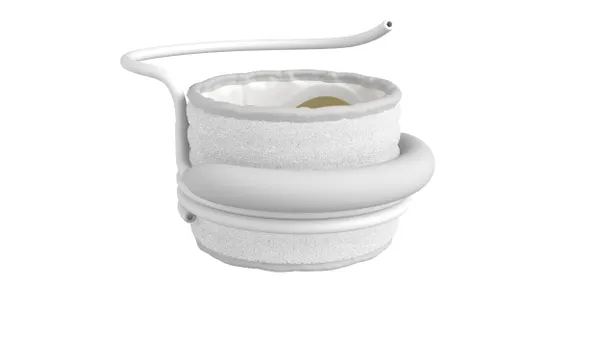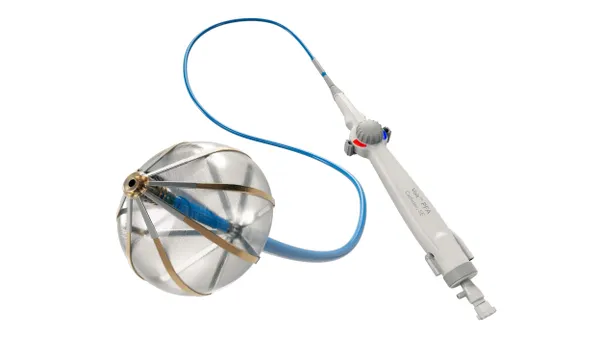Dive Brief:
- Medtronic has won Food and Drug Administration approval for the Omniasecure defibrillation lead, the company said Friday.
- The lead connects to an implantable defibrillator and treats potentially life threatening types of irregular heart rhythm. Medtronic said Omniasecure is the world's smallest defibrillation lead.
- The approval limits the use of the lead to the right ventricle. Medtronic shared data on placing the lead in the left bundle branch last week but has yet to win FDA approval in that setting.
Dive Insight:
Defibrillator leads connect to implantable cardioverter defibrillators and cardiac resynchronization therapy defibrillators to prevent sudden cardiac death. The lead senses the heartbeat and sends signals to tell the defibrillator to correct or interrupt abnormally fast rhythms.
Medtronic reported low-single-digit growth in defibrillation sales in its earnings presentation in February.
Omniasecure is built on the Selectsecure Model 3830 pacing lead. The company received FDA approval for the 3830 lead in 2005.
Basing Omniasecure on 3830 differentiates the defibrillation lead from Medtronic’s older Sprint Quattro and withdrawn Sprint Fidelis devices. Quattro has a lumen, a tube through the center of the lead, and is larger in diameter. Fidelis was narrower; however, Medtronic withdrew Fidelis from the market because it was prone to fracturing.
Omniasecure has a simpler, lumen-less design and a diameter of 4.7 French, or 1.6 mm. Creating a narrower, simpler device could enable physicians to use existing pacing catheters to place the defibrillation lead, Medtronic researchers and their collaborators said in a research paper last year.
Alan Cheng, chief medical officer of Medtronic’s cardiac rhythm management unit, said in a statement that the smaller size of Omniasecure is intended to help minimize complications. Cheng named vascular complications and valve interaction as examples of risks that could be mitigated by using the new lead.
Medtronic reported 19 lead-related major complications within six months of Omniasecure placement in a clinical trial that treated 657 patients. Lead dislodgement happened in 11 people, mostly within 30 days of treatment. The next most common lead-related major complications were P-wave oversensing and cardiac perforation. There were no complications associated with the tricuspid valve.
Correction: This article has been updated to correct the date when Medtronic's 3830 lead was approved by the FDA. The lead was approved in 2005.












